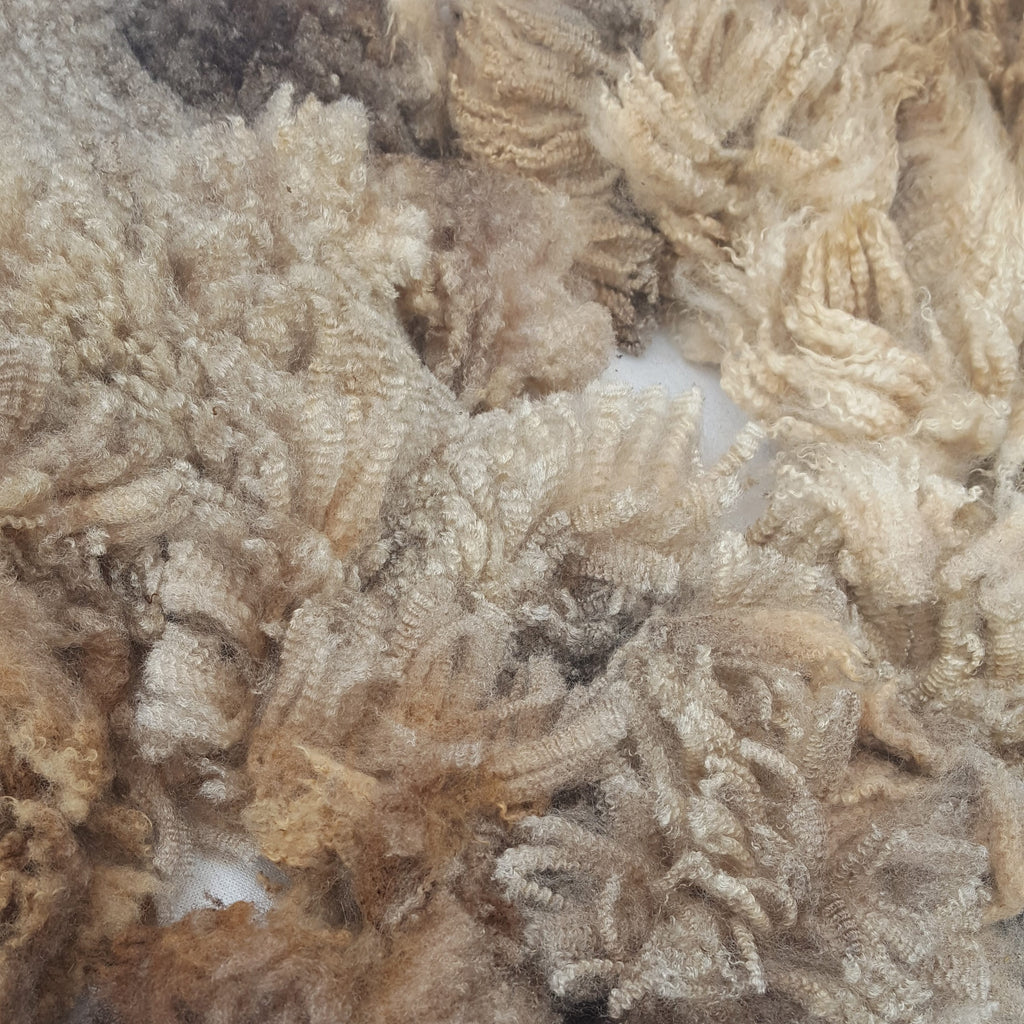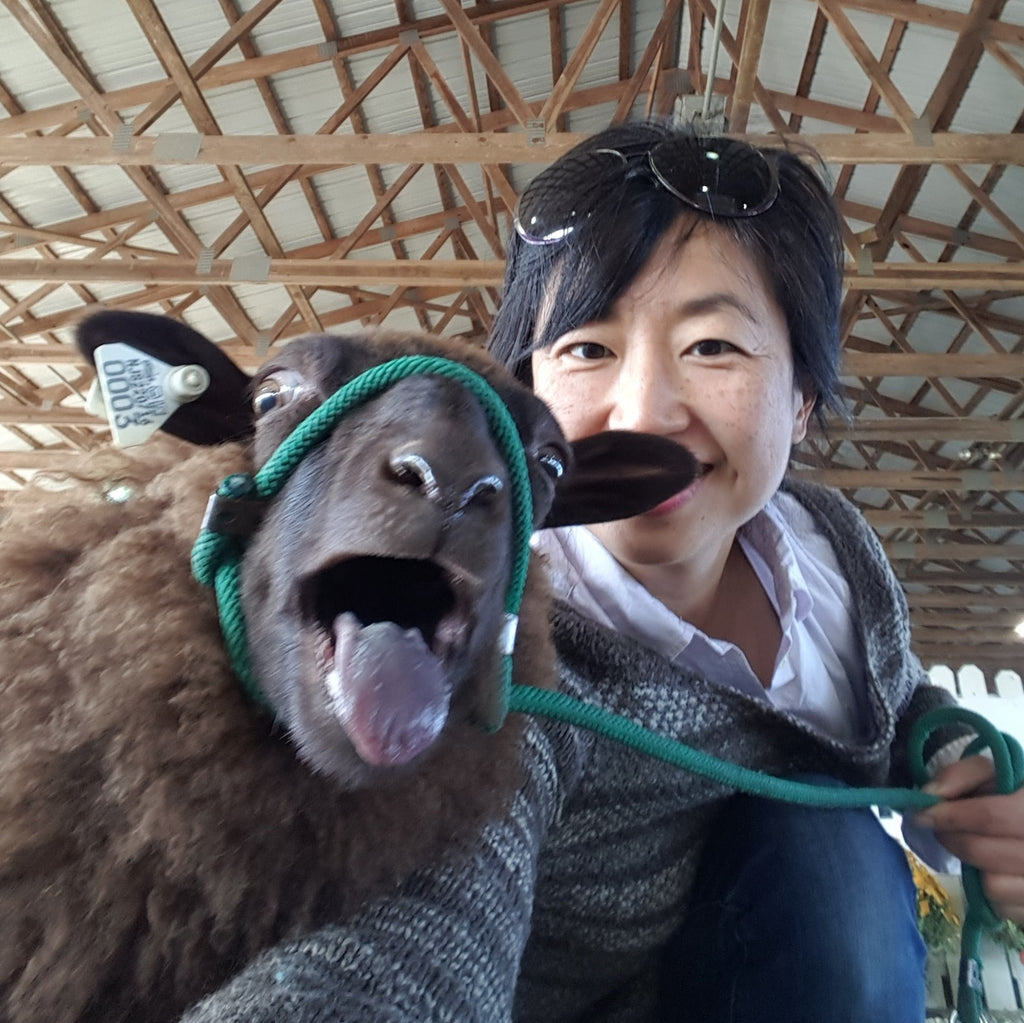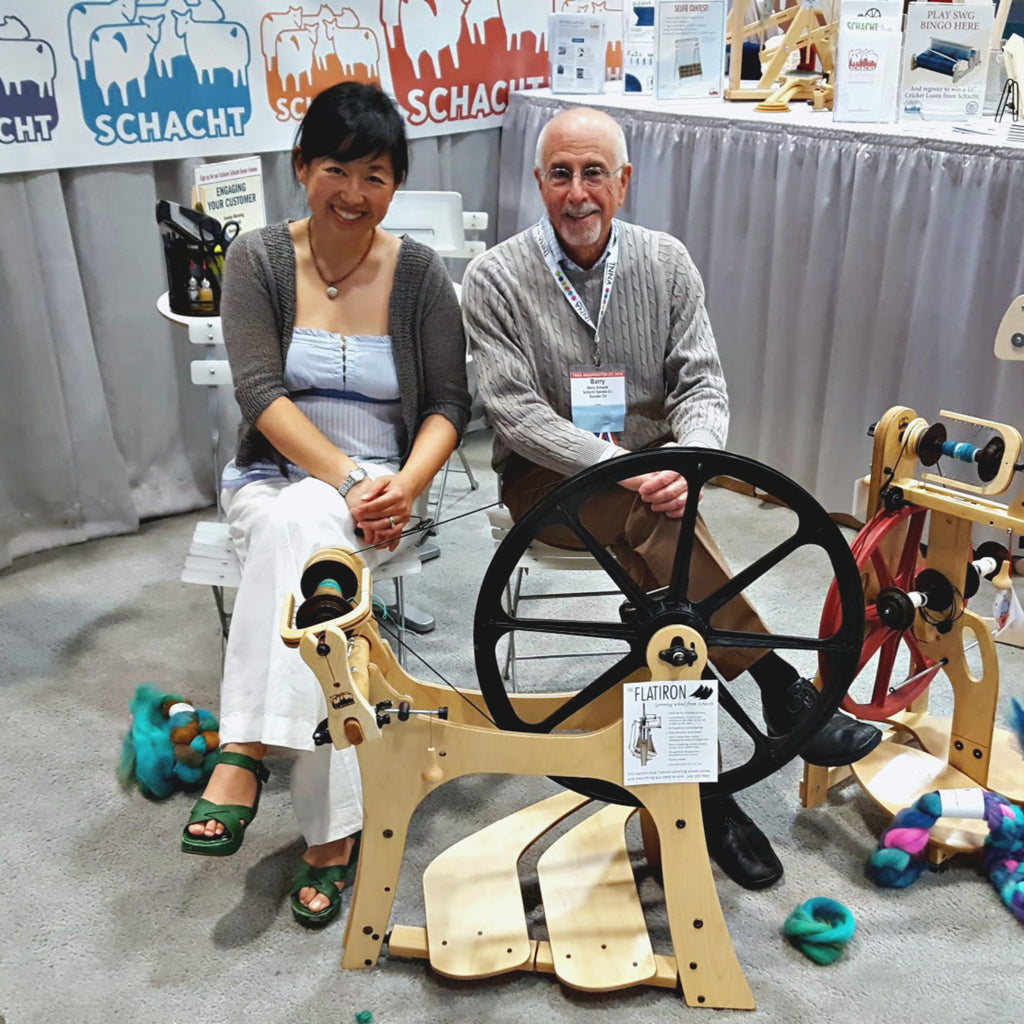Notes from the Farm
Garden State Sheep Breeders NJ Sheep & Fiber Festival
How To Tame Your Lamb
Flock Integration: Barnyards And Schoolyards
A Reason for Yarn
On the long drive home, I mulled over what fibers I would blend to produce the ideal shawl or sweater yarn. The Shetland Islands has been a leitmotif in my life this spring, so when I envisioned shawls, I had haps in mind. Unlike the intricate lace wedding shawls that, according to tradition, were fine enough to pass through a wedding ring, hap patterns were written with a simple lace design and knit with a thicker yarn, for everyday wear.
My yarn, I decided, would be lofty for warmth, durable--no wimpy pilling!, elastic because my hands are getting arthritic, and able to hold a lace pattern like a champ. The yarn would need to make a finished fabric that was lightweight, but have enough substance and body so that it didn't just puddle around my neck. And on top of all that, it needed to be soft enough for my sensitive skin.

The more I thought about it, the more requirements I kept dreaming up for my yarn. I wanted to be able to hand-pick each fleece from sheep I knew personally (or at least knew the shepherds), and I wanted a range of natural colors. But natural colors with depth and tonal complexity. And the last thing? I wanted heaps and heaps of this wonder yarn, which meant that I'd getting it spun for me. So it needed to be a blend of fibers that could be processed by a small fiber mill, and still retain its homegrown roots.
When I got home, I started weighing, carding, and blending some fibers together.

For weeks, I played with percentages and color combinations, and I spun and knit several test samples. I took the yarn with me everywhere, showing it to knitting friends and asking for feedback. It wasn't until I finished my Hansel Hap Shawl by Gudrun Johnston, and blocked it, that I was certain I got it right.
It was time to go mill shopping. I heard so many glowing recommendations for John and Lydia Piper at Gurdy Run Woolen Mill, and when I spoke with John, I could see why. I've never dropped off fiber to be processed before, and he was very patient about walking me through the process. We talked about the the fibers I'd chosen, and the best way to draft them individually and together. We talked about starting with a combination of combed top, carded roving, and raw fleece to end up with a yarn that had all the qualities I wanted.

The process of mill-spinning is both more high-tech and at the same time, more hands-on than I'd thought. Sure, the machines do the actual carding, drafting, and spinning, but it's not all one run-through. I didn't exactly think that John and Lydia just dumped fibers into a chute, tapped a few buttons on their laptops, and enjoyed iced tea on the porch while they waited for the machine to spit out skeins of yarn. What did I know? Not much, apparently.
The raw fleeces are washed by hand, and the carding, picking, pin-drafting, and spinning are each individual steps, requiring human oversight and adjustment. They handle the fiber between each stage, to weigh and evaluate what went in, and what came out. There's complex math involving weights and measurements, which Lydia explained and I nodded whenever I thought she needed the encouragement to go on.
There are cool gadgets like an air splicer (I want one!), but the skeining and tying are done by hand. I hope to go back for a visit on the day they're working on my yarn, and Lydia said if I'm lucky, she'll put me to work tying up the skeins. I can't wait.

Highlights from TNNA Needle Arts Trade Show
This past weekend was the TNNA Needle Arts Trade Show. It was like the biggest yarn shop in the world; the yarn shop's yarn shop, as it were. Indie dyers, yarn companies, equipment manufacturers, designers, tool suppliers...if you've seen it in a yarn shop, it was represented at the show.
My friend and mentor Dalis Davidson, of Dancing Leaf Farm, was a first-time vendor this year, so it was a great excuse for me to go hang out with her, and to check out the scene. Being neither a major wholesaler nor a yarn shop, I was just basically an unattended child in a toy store. I got to play with friends, paw through all the Habu yarn and knit samples, and I even carded an art batt on the Strauch motorized drum carder. It's not a model I have in the studio, so it was a treat. Having Otto Strauch himself hovering over me (and videoing!) my carding technique wasn't nerve-wracking at all. Nope.

The highlight of the day was getting the chance to test drive the new Schacht Flatiron wheel. It'll be available for sale in August, and I was very excited to give it whirl. I've been thinking about the experience, and it reminds me of the first time I tasted Marmite. Like Marmite, seeing the Flatiron for the first time elicits an immediate "what is that?!" response. Which, if you're me, leads to, "I have to try it!"
So what did I think? Long draw is my go-to method, and I hold the fiber in my left hand. Which was convenient, since that's the way the demo wheel was assembled (the flyer can be mounted on either side). The drive wheel, measuring 22.5" (compared to the Matchless's 19.5"), has horsepower to spare, and its wide footprint ensures that despite the fact that it weighs less than the Matchless, treadling feels smooth and rock-solid. One perk of the design is that because the bobbin is about elbow-height, it's possible to see the entire bobbin. Maybe I'm the only one bothered by the fact that I can only see 3/4 of the bobbin while I'm spinning on the Matchless or Ladybug, but I appreciated the full-bobbin view on the new Flatiron.
And speaking of the view...it's eye-catching and singular, no doubt. I asked Barry why it looked the way it did. His goal, he said, was to engineer a a wheel that could be shipped flat, and the design was influenced by a steampunk aesthetic that he hoped would lure the young IKEA crowd. Hmm. Any young IKEA fans out there reading this post and feeing the allure of a steampunk-inspired wheel? Please sound off below.
As I was grilling Barry about the...let's say unorthodox...styling, a longtime LYS owner chimed in to say that when the Matchless made its debut, it was met with criticism and horror. So we'll see. Maybe symmetry and charming little ladybugs will become a thing of the past in the wake of this new design. It'll be available for delivery (in a flat box!) in August for $795.

Specifications:
Double treadle
Spinning modes: Scotch, double drive, bobbin-lead
Spinning ratios: 4.6:1 to 26:1
Weight: 15 pounds
Drive wheel: 22 1/2”
Orifice height: 26”
Dimensions: 33” wide x 33” tall x 18” deep
Comes with 3 bobbins, medium and fast whorls, cotton and poly drive bands, threading hook.




